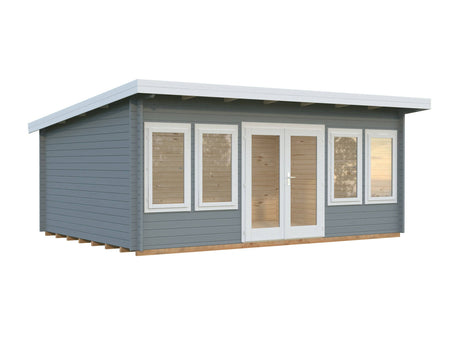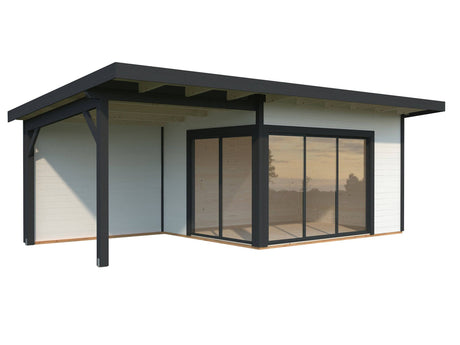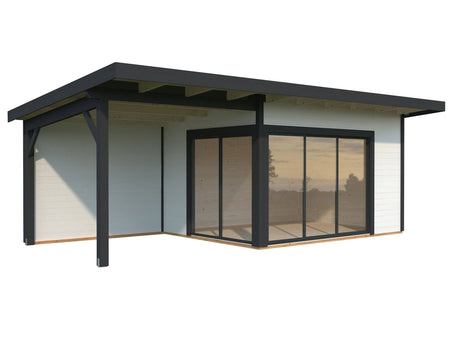With Christmas long gone and the temperatures gradually rising, it’s time to do some winter gardening and preparing for spring.
While it’s still not exactly peak gardening season – there’s still too high a risk of frosts at night to be sure the season of Growth has arrived – there’s still plenty of work you can do this winter to keep yourself occupied, prepare for the spring or just enjoy the great outdoors. So here are 7 ways in which you can satisfy your horticultural needs in the winter.
Tip 1 – lawn care in winter

Lawns are fundamental to a well-kept garden and there are plenty of lawn-related tasks for winter. Whilst grass seed shouldn’t generally be sown in the UK until late March, turfs are much more flexible.
Autumn is generally considered the ideal time to lay turf, but any time up until late winter or early spring should be good, as long as the soil is not too waterlogged or frosty. Beyond that, lack of rain can be a problem for very young turf.
If you are looking for more advice on investing in a new lawn or maintenance of your current one, there is some good articles covering winter gardening on the Lawn UK site, and there is good advice on laying and caring for turf on the RHS website.
Tip 2 – caring for soil in winter

The foundation and essential ingredient of every flowerbed or veg patch, soil will benefit greatly from some care during the winter months; removing weeds and unwanted shrubbery, and some forking and digging to desaturate it and avoid excessive compounding.
An essential part of winter gardening – and crucially preparing for spring – is to add compost, manure and wood ash to soil to improve fertility. Doing so will set you up with a plot fully prepared to grow whatever you please in time for spring (and it’s worth putting the effort in, as you will reap the rewards later in the year).
Do however avoid digging and hoeing soil when it is frozen as it damages the soil structure and degrades its overall health.
Tip 3 – plan in winter so you’re ready in spring

Although there are many ways in which you can continue gardening throughout the colder months, the fact remains that winter gardening is limited and sometimes dreary work. So if you don’t fancy stepping out in the cold, you can take the opportunity to get ahead by researching – such as ordering and browsing seed catalogues – and planning your garden so that come spring, you’ve got everything under control.
And if you’ve felt depressed at the bareness of your garden throughout the winter, then your planning could the future could include some winter-flowering bulbs and plants for next year.
There are plenty of online garden catalogues available if you want to start preparing for spring too.
Tip 4 – winter is the ideal time to plant and maintain fruit trees

Fruit trees – be they apple, pear, fig or plum – are a practical (and tasty!) addition to a garden and they can be planted anywhere between late autumn and March depending on the variety.
If however your new fruit trees are delivered bare root, do not plant them if it is freezing cold as it will damage the roots. It’s always best to wait until soil and roots thaw and warm up before planting or moving trees.
For existing fruit trees and bushes, it’s worthwhile doing some maintenance around this time of year. Stakes and ties to protect them from March winds should be checked; and oil-based winter washes will help to ensure they don’t become pest-infected.
Fruit bushes should be pruned back and some fertiliser or mulch around the base can be very helpful to ensure they are producing plentiful and ripe fruit come harvesting time.
Tip 5 – prepare the vegetable patch for spring

Many of us have good – and as yet unfulfilled – intentions about starting a good vegetable patch, and now is the time to take action.
Beans, carrots, cucumbers, lettuces, onions, tomatoes and many more veggies can be planted throughout February and March (look out for early varieties and don’t plant when the soil is still cold, or use a polytunnel to keep young seedlings warm).
The National Allotment Society suggest covering the ground with cloches or sheets of plastic to help warm up the soil. Rather than leaving raised beds bare in winter cover them with weed sheet to stop weeds and keep warmth in.
There’s another good blog post on winter vegetable gardening here, and there’s a predictably good selection of vegetable seeds on the Sutton Seeds website.
Tip 6 – planting flowers in winter?

The centrepiece of picture-book garden, loads of flowers can be planted in the winter months – sweet peas, antirrhinums and salvias, being good examples.
Generally safest when growing from seeds in early spring is to grow seedlings pots first, for planting out later on; only the bold or those in very warm parts of the UK will plant direct into the soil before late March.
Tip 7 – winter gardening involves looking after buildings too

The UK winter can be harsh and, even if your pergolas, garden buildings and greenhouses are weatherproofed, the past few months may have taken its toll on them.
You might not be inclined to get involved in winter gardening, but as the season draws to a halt, it’s the perfect time to make sure there’s no damp, insulation problems or leakages in any garden structures, particularly wooden ones, and repair/prepare in time for peak growing season. It’s also a good time to do some tidying of tools, garden equipment, and all the junk that’s colonised your summer house or garden workroom since last summer.If you’re thinking of upgrading, now is also the perfect time to explore affordable summer houses that can enhance your garden space without breaking the bank.
If you’re looking for more detailed advice, this blog has some good ideas.






























































